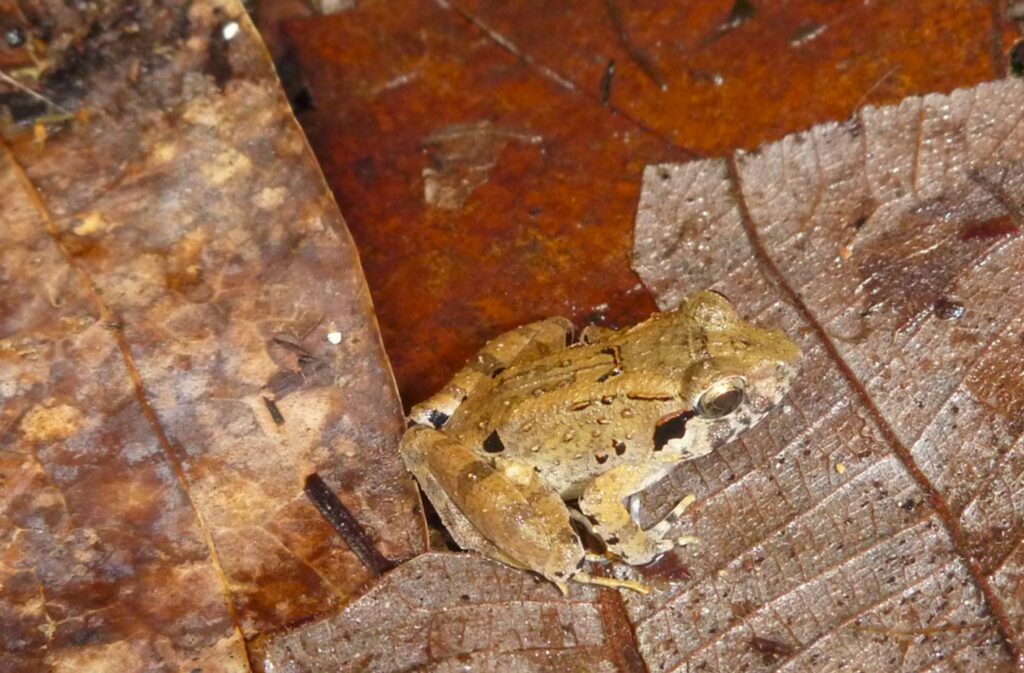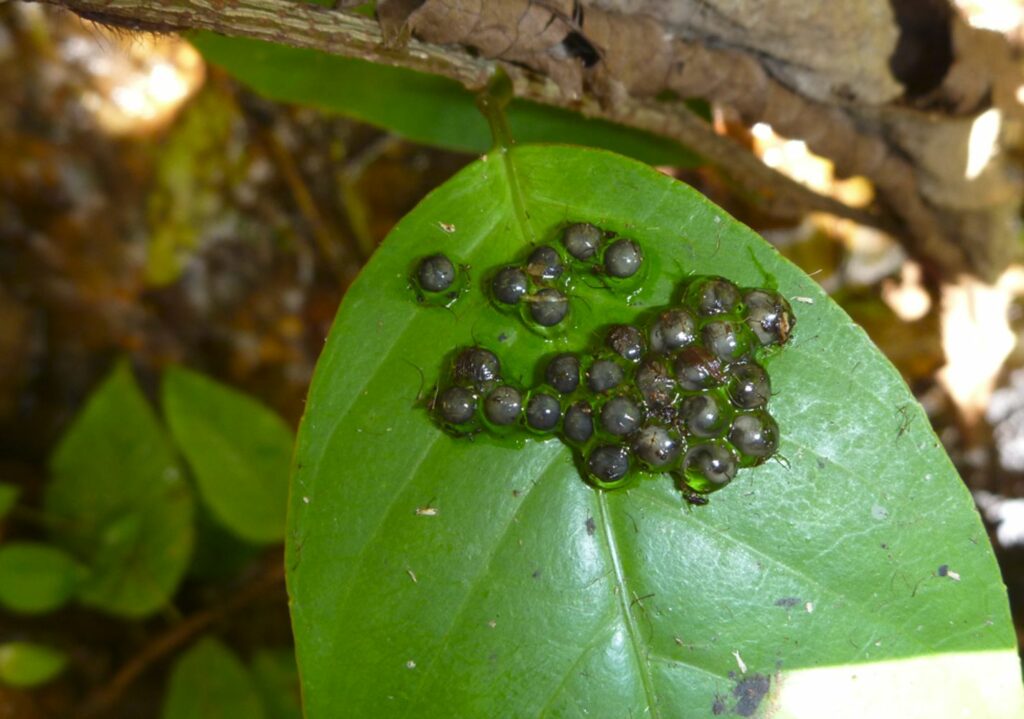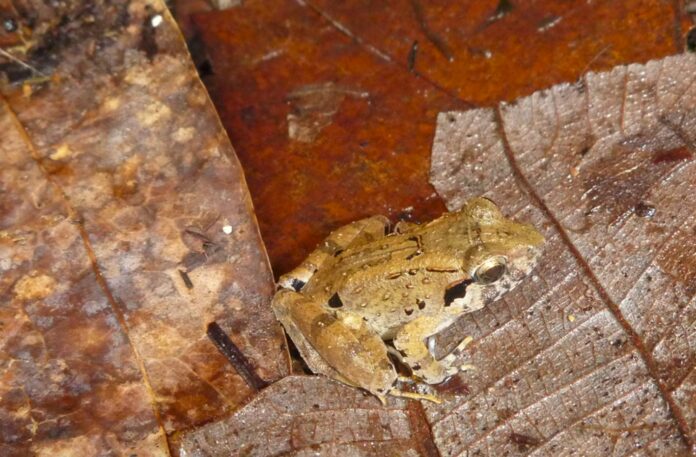Tiny Terrors: The world’s smallest “fanged” frogs live in Indonesia and weigh about the same as a dime.
Indonesia has become the stage for a biological spectacle as researchers uncover the world’s smallest “fanged” frog. The scientific name for the new species is Limnonectes phyllofolia; phyllofolia means “leaf-nester.”
However, a specific category of frogs inhabiting Southeast Asian streams introduces an unusual twist: they exhibit a peculiar adaptation with two bony “fangs” extending from their lower jawbone.
They utilize their teeth to fight for territory and mates, and sometimes to pursue tough-shelled prey like huge centipedes and crabs.
Researchers report a new species of fanged frog, the tiniest ever found, in a new study published in the journal PLOS ONE.

“This new species is tiny compared to other fanged frogs on the island where it was found, about the size of a quarter,” reveals lead author Jeff Frederick. “Many frogs in this genus are giant, weighing up to two pounds. At the large end, this new species weighs about the same as a dime.”
In partnership with the Bogor Zoology Museum, researchers from the McGuire Lab at Berkeley discovered these frogs on Sulawesi, a rugged and mountainous island constituting a part of Indonesia.
“It’s a giant island with a vast network of mountains, volcanoes, lowland rainforest, and cloud forests up in the mountains. The presence of all these different habitats mean that the magnitude of biodiversity across many plants and animals we find there is unreal – rivaling places like the Amazon,” adds Frederick.
While venturing through the jungle, members of a collaborative US-Indonesia amphibian and reptile research team made an unexpected discovery on the leaves of tree saplings and moss-covered boulders: nests of frog eggs.
Amphibians, such as frogs, deposit eggs enveloped in jelly instead of a rigid, protective shell. Typically, to prevent desiccation, most amphibians choose aquatic environments for laying their eggs.
Surprisingly, the study team continued seeing terrestrial egg masses on leaves and mossy stones many feet above the ground. They soon started to notice the little, brown frogs themselves.
“Normally when we’re looking for frogs, we’re scanning the margins of stream banks or wading through streams to spot them directly in the water,” Frederick explains. “After repeatedly monitoring the nests though, the team started to find attending frogs sitting on leaves hugging their little nests.”
This intimate touch with their eggs helps the frog parents cover the eggs with substances that keep them wet and free of bacterial and fungal infection.
A closer look at the amphibian parents showed that they were not just small members of the fanged frog family, replete with barely visible fangs, but that the frogs caring for the clutches of eggs were all male.

“Male egg guarding behavior isn’t totally unknown across all frogs, but it’s rather uncommon,” adds Frederick.
Frederick and his colleagues believe that the frogs’ unusual reproductive patterns are related to their smaller-than-usual fangs. Some of the frogs’ cousins have larger fangs, which helps them compete for sites along the river to deposit their eggs.
As these frogs developed a mechanism to deposit their eggs away from the water, they may no longer need such large, threatening teeth.
“It’s fascinating that on every subsequent expedition to Sulawesi, we’re still discovering new and diverse reproductive modes,” adds Frederick. “Our findings also underscore the importance of conserving these very special tropical habitats. Most of the animals that live in places like Sulawesi are quite unique, and habitat destruction is an ever-looming conservation issue for preserving the hyper-diversity of species we find there. Learning about animals like these frogs that are found nowhere else on Earth helps make the case for protecting these valuable ecosystems.”
Source: 10.1371/journal.pone.0292598
Image Credit: Sean Reilly
